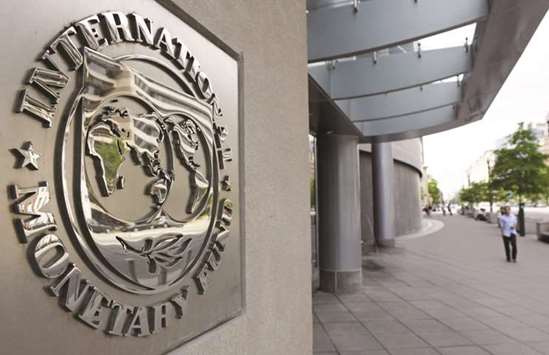An International Monetary Fund barometer for detecting shifts in financial system pressure may be swinging in the wrong direction.
The IMF assesses how easily riskier companies can access credit compared with healthier firms. Allocations of investments to such companies may have risen in recent years, because of looser money policies worldwide, according to a report published yesterday. That could serve as a predictor for financial stress down the line, the IMF said.
“As financial conditions loosened further in 2017, the riskiness of credit allocation might have continued to rise, which warrants close monitoring and heightened vigilance,” the report said.
“Taking the riskiness of credit allocation into account helps better predict full-blown banking crises, financial sector stress and downside risks to growth.”
The fund’s call for vigilance comes amid a growing chorus of money managers and analysts pointing to corporate credit as a source of looming financial pain, after years of extremely cheap rates allowed firms to load up on debt.
Guggenheim Partners and Pacific Investment Management Co have raised such flags while S&P Global Ratings research published February showed the proportion of highly-leveraged companies globally has crept up in the last decade.
In previous cycles, a severe downturn or stress in the financial sector is more likely to follow periods when credit allocations grew riskier as they expanded, the IMF’s report found.
That means policy makers “should pay special attention” to periods when credit expands and allocations get riskier.
The trend is “a source of vulnerability that may threaten financial stability” and if such risk-taking becomes excessive, it could impede future growth, according to the IMF.
It suggested policies and practices that curtail credit allocation risks could be a more independent banking supervisor, sounder corporate governance standards and tightening banks’ regulatory capital requirements.
Companies with higher debt-to-asset and earnings ratios, lower interest coverage ratios and higher default probabilities have better chances of borrowing during times of faster economic or credit growth, according to the report. These ratios taken together have predicted financial stress better than an individual ratio, in some cases up to three years in advance, it said.
Globally, risky credit allocation in 2016 — the last year in which full data is available — rose to what would be an average level when looked at in a historical context, according to the report. That level is an increase from a trough reached in the years following the financial crisis.

u201cAs financial conditions loosened further in 2017, the riskiness of credit allocation might have continued to rise, which warrants close monitoring and heightened vigilance,u201d the IMF report says.


